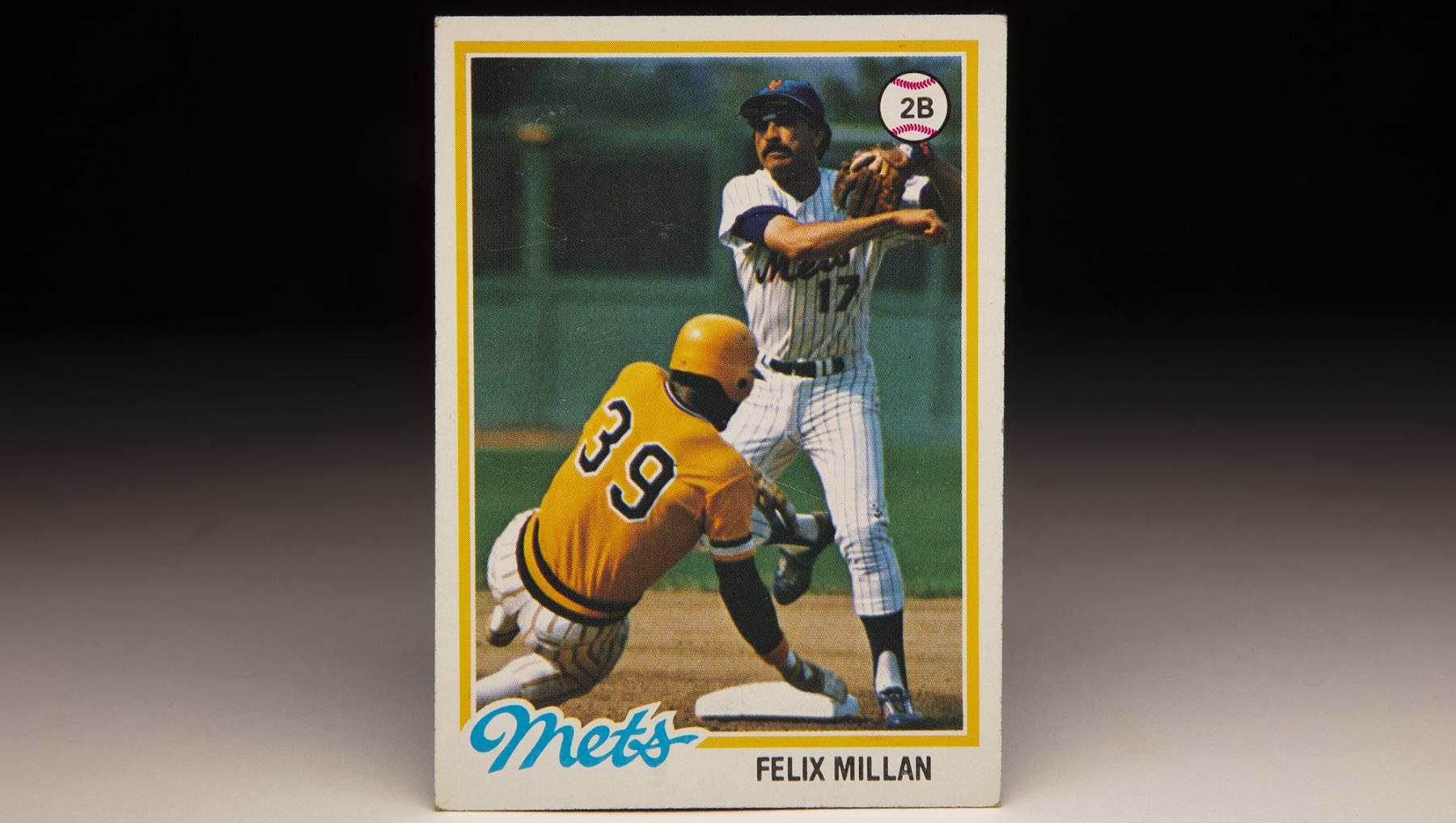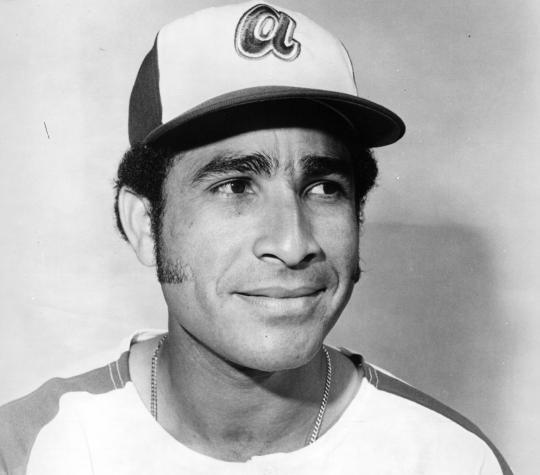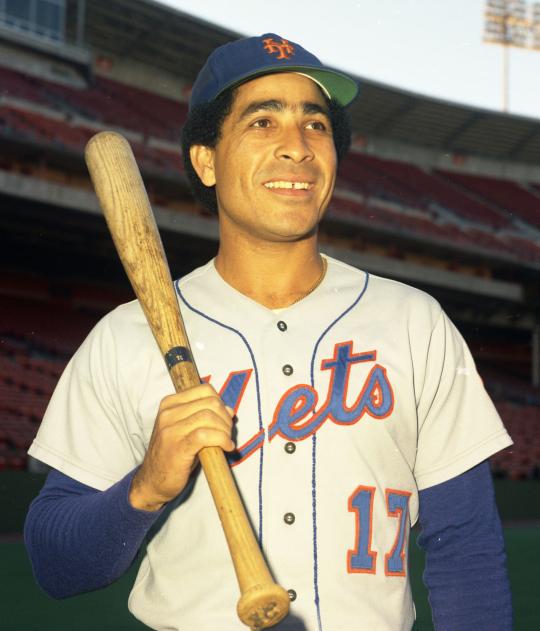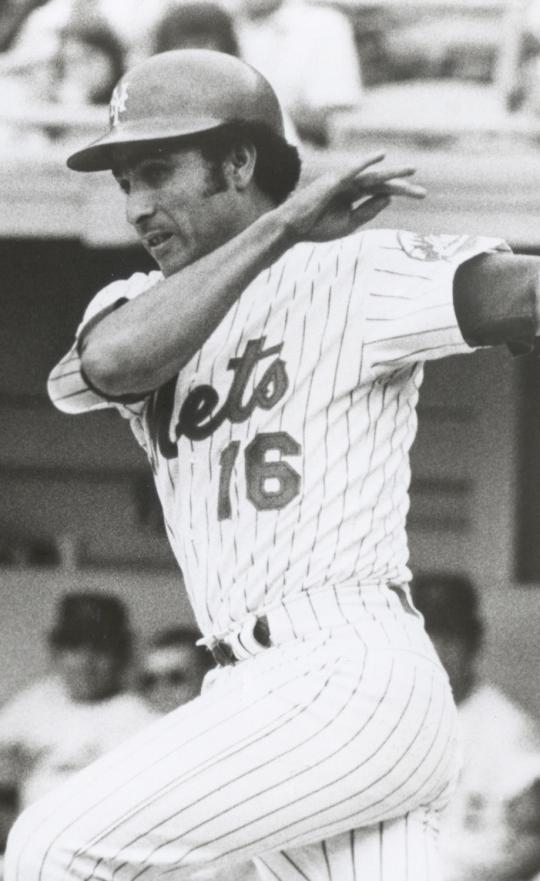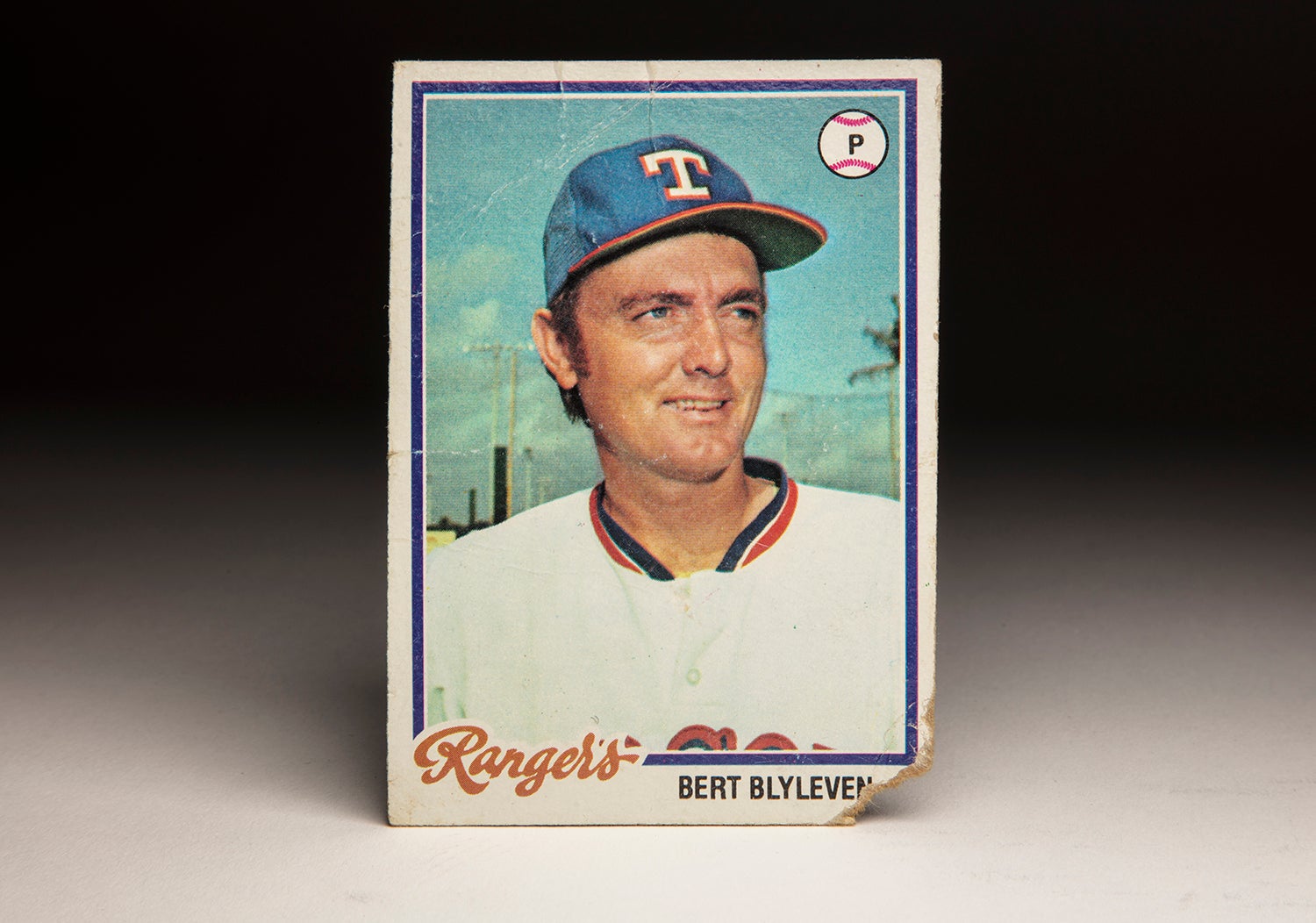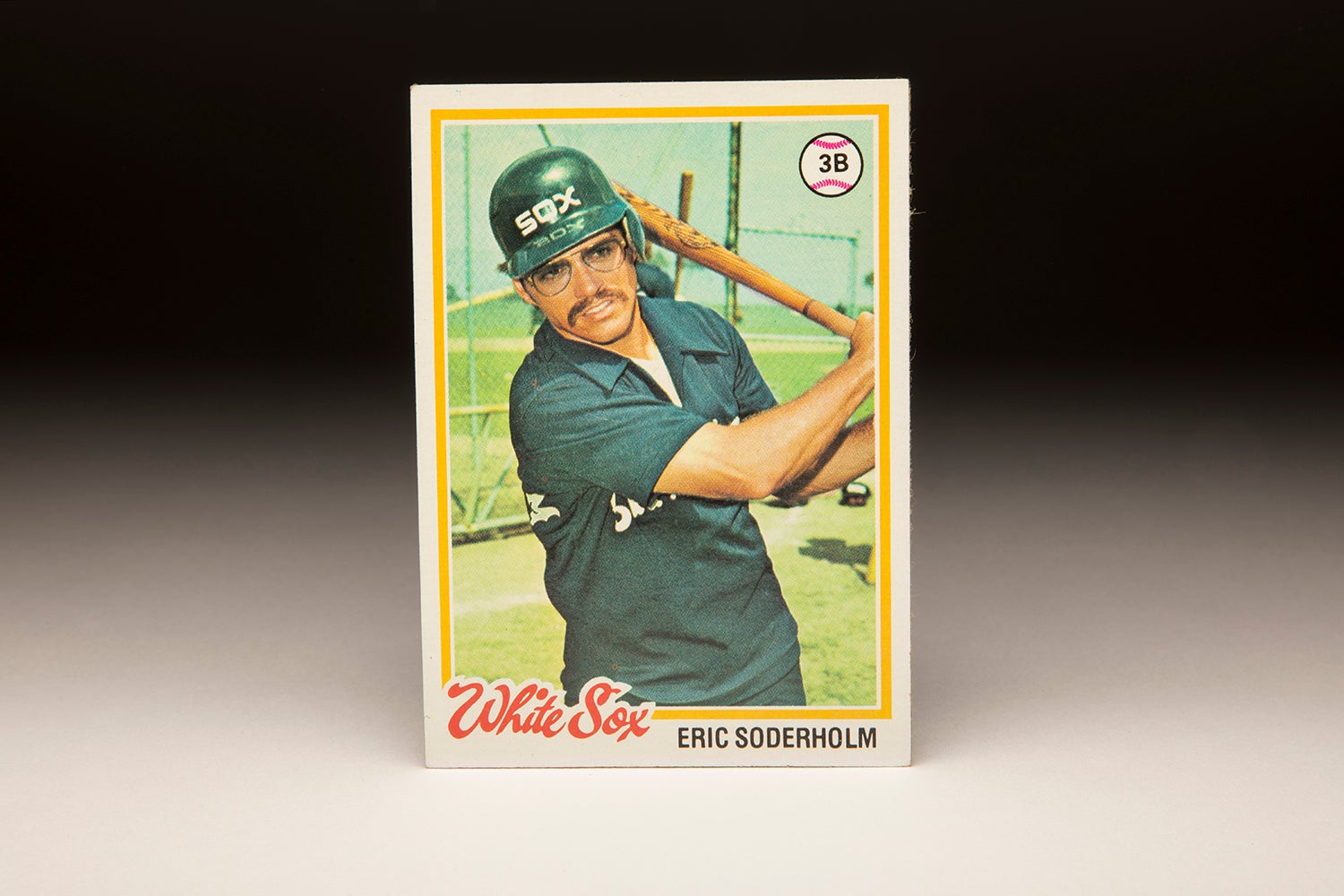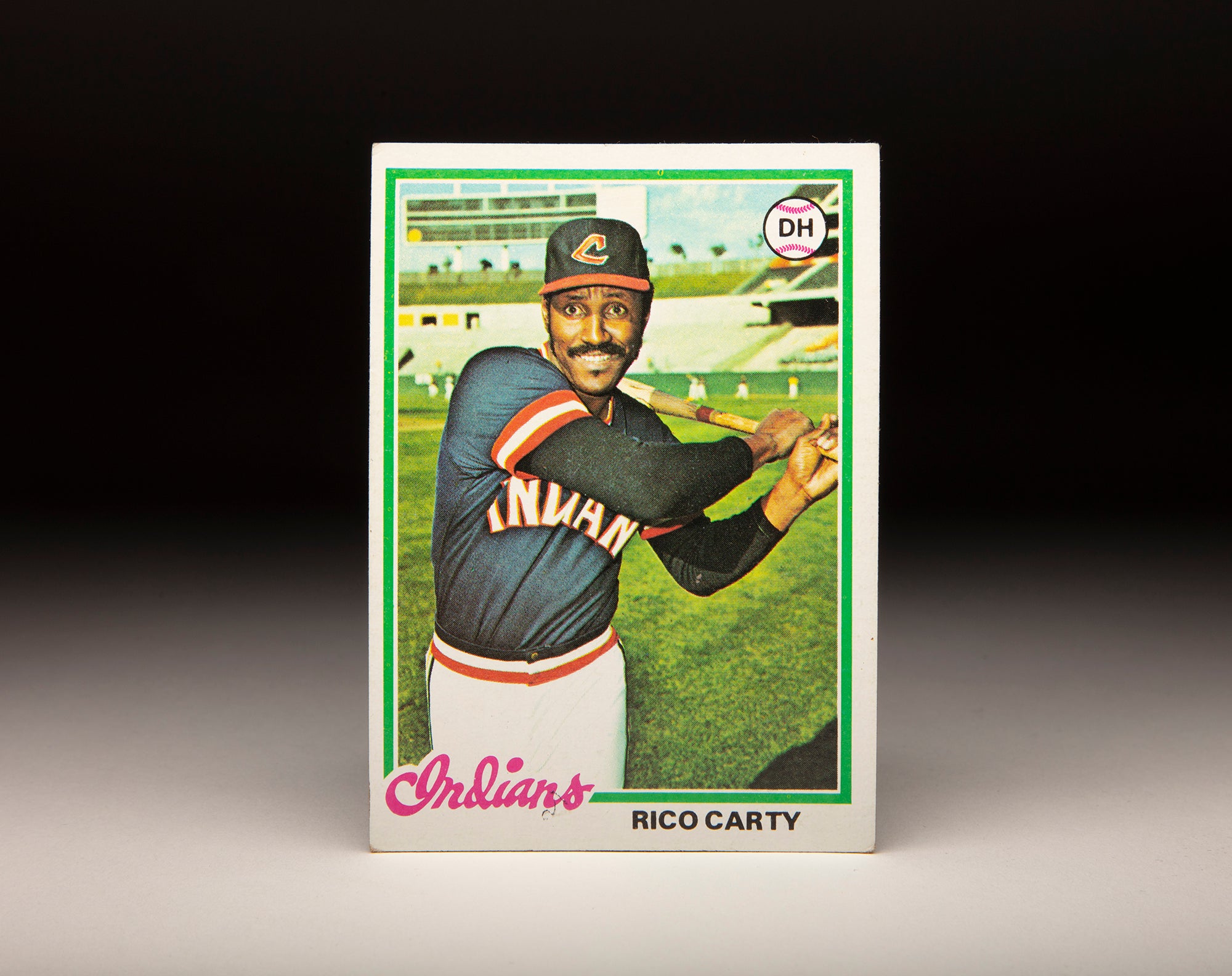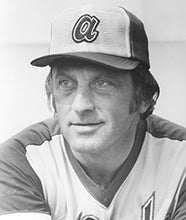- Home
- Our Stories
- #CardCorner: 1978 Topps Félix Millan
#CardCorner: 1978 Topps Félix Millan
Since the end of World War II, three players have begun big league careers that encompassed at least 6,000 plate appearances and fewer than 250 strikeouts.
The most recent of those three to appear in an MLB game was Félix Millan, who turned exceptional bat control into 1,617 hits, three All-Star Game selections and a reputation as one of the finest second basemen of his day.
Hall of Fame Membership
There is no simpler, and more essential, way to demonstrate your support than to sign on as a Museum Member.
Millan was born Aug. 31, 1943, in Yabucoa, Puerto Rico – one of 10 children in his family. His father worked in the sugarcane industry and his son, growing up in the San Juan neighborhood of Río Piedras, dreamed of playing in the big leagues.
“To tell you the truth, I don’t know what I would have done if I didn’t play ball,” Millan told the Pittsburgh Press in 1973. “A man was talking to me about a track scholarship to the University of Ponce, but then I signed a baseball contract.
A first baseman in amateur leagues in Puerto Rico, Millan signed with the Kansas City Athletics in 1963 for a $2,500 bonus.
“The first year in training camp, I asked to try out at shortstop or second base," Millan said. "I couldn’t hit home runs like a first baseman should.”
The Athletics sent Millan to Class A Daytona Beach of the Florida State League, where he hit .291 with 48 runs scored in 95 games in 1964. Then, on Nov. 30, the Milwaukee Braves selected Millan in the first-year draft.
For an investment of $8,000, the Braves found their future second baseman. In that same draft, the Red Sox claimed a future Cy Young Award winner – Albert Lyle, soon to be known as Sparky – from the Orioles.
Millan started the 1965 season with Class A Yakima of the Northwest League, hitting .322 in 91 games before earning a promotion to Double-A Austin. He began the 1966 season back in Austin, hitting .311 in 35 games before heading to Triple-A Richmond. After batting .315 with the Braves’ top farm team, Millan was brought up to Atlanta on June 2.
“A terrific major league prospect,” Austin manager Hub Kittle told the Atlanta Journal Constitution of Millan.
Millan debuted with the Braves the following night at second base, going 1-for-2 against the Giants. He started virtually the whole month of June at second base but was moved out of the starting lineup in July in favor of Frank Bolling. Despite a .280 batting average accrued while battling a finger injury, Millan was returned to Triple-A at the end of July. In a corresponding move, the Braves brought future Hall of Famer Phil Niekro back to Atlanta from Richmond.
But Millan was recalled to Atlanta in September. And in 1967, he made the Braves’ Opening Day roster and settled in as the starting second baseman for April and half of May. But with a .194 batting average on May 15, Millan lost his job and was soon returned to Richmond.
“I think I could help them if they’d give me a chance,” Millan told United Press International during a season in Richmond where he was named to the International League’s All-Star Game. “I was very disappointed when they sent me down. But at least I get to play here. I’d rather play here than sit on the bench in Atlanta.”
After Millan hit .310 with 135 hits in 106 games for Richmond, the Braves again summoned him to Atlanta in September after Richmond won the International League title and Millan was honored as player of the year. This time, Millan hit .270 as Atlanta’s starting second baseman for the last month of the season.
On Opening Day of 1968, Millan was in the Braves’ starting lineup as Lum Harris, who managed Millan in Richmond in 1967, took over at the Atlanta helm. Millan would remain the Braves’ regular second baseman through the 1972 campaign.
Almost immediately, Hank Aaron took Millan under his wing.
“Hank was great,” Millan told the Atlanta Journal Constitution in 2000. “He let me stay at his house and showed me around Atlanta. On the road, he had (the Braves’ traveling secretary) make me his roommate.
“To me, Hank will not only be the greatest player I ever saw, but a great person.”
Millan hit .289 in 1968 as the NL overall posted a mark of just .243 in the Year of the Pitcher. Swinging a 36-ounce bat and choking up two or three inches, Millan lashed pitches to open spots of the field and used his speed to work his way onto the bases.
In 1969, Millan was named to the first of three straight All-Star Games – earning the starting role in his first ASG appearance – as he batted .267 with 98 runs scored, 57 RBI and 14 stolen bases as the Braves won the inaugural NL West title. He scored the go-ahead run in the game that clinched the division title for the Braves on Sept. 30, dashing home from third base on a sacrifice fly by Rico Carty that put Atlanta ahead to stay in a 3-2 win over the Reds in the season’s penultimate game.
Millan also flashed the defensive skills that would win him a Gold Glove Award as he led NL second basemen in putouts (373), assists (444) and fielding percentage (.980).
In the NLCS, the Braves were swept by the Mets but Millan hit .333 and drew three walks.
“When it comes to bat control, Millan is one of the very best,” Hank Aaron told the Atlanta Journal Constitution. “He protects the plate and hits the ball to opposite fields as well as anyone.”
Millan’s 1970 season got off to a slow start when he was diagnosed with anemia in Spring Training. But he would proceed to have what was arguably his best season, hitting .310 with 100 runs scored and 16 steals in just 142 games due to a fractured hand. He followed that up with a .289 batting average in 1971 as he was named to the All-Star Game for the third straight season.
“This little guy won’t hit the long ball for you,” Braves manager Lum Harris told United Press International. “But when he goes up to the plate, you know he’ll make contact. Day in and day out, he gets the job done.”
On July 6, 1970, Millan went 6-for-6 at the plate against the Giants – becoming only the 60th player in AL or NL history to reach that plateau in a single game. He was the first player in Braves history to reach the mark ultimately one of only nine players to record six hits in one game in the 1970s.
“I know I wouldn’t trade him for any second baseman,” Harris told the Atlanta Journal Constitution in the spring of 1971. “I was sold on him from the start because of his attitude as much as ability. If all ballplayers were like Félix Millan, I could go out to Lake Okeechobee and manage. I’d just phone in and get the results.”
In 1972, Millan won his second Gold Glove Award but scuffled at the plate as his batting average dropped to .257 as he battled a circulatory problem in his left index finger – likely caused by grounders hitting the pocket of his glove. Trade rumors swirled for much of the second half of the season.
“I never saw anybody hit the ball so sharply and get robbed so much,” teammate Rico Carty told the Atlanta Constitution.
But with prospect Larvell Blanks having hit .329 in 33 games in 1972, the Braves saw Millan as expendable. On Nov. 2, Atlanta traded Millan to the Mets with George Stone for Danny Frisella and Gary Gentry.
“Félix is the kind of guy you hate to lose,” Braves manager Eddie Mathews told the Constitution after the trade. “But we need pitching and you can’t get something for nothing.”
Millan quickly embraced the trade, which sent him to a city with a huge Puerto Rican population.
“When I came to this country, I had little English,” Millan told the Star-Ledger of Newark, N.J., during his first Spring Training with the Mets in 1973. “You know this can be a hard problem sometimes.
“I have no complaint with Atlanta. But coming to New York, well, this is a dream for me. Here I am coming home to my people.”
Less than two months after the trade, Roberto Clemente – the most prominent Puerto Rican player in baseball – was killed in a plane crash. Millan owned a house within walking distance of Clemente’s in Puerto Rico and often worked out with the Pirates’ star during the offseason.
“The Pirates (have) to miss him,” Millan told the Pittsburgh Press in 1973. “But we (Puerto Ricans) miss him more than they do.”
Millan, however, did his best to make his countrymen proud. Stabilizing the Mets’ infield during a season where lineup stalwarts Bud Harrelson, Jerry Grote and Cleon Jones all missed significant time with injuries, Millan hit .290 with team-leading totals in hits (185, a then-Mets record) and runs (82). The Mets were 61-71 on Aug. 30 but closed the season with a 21-8 record to claim the NL East title with a mark of 82-79.
Over that stretch, Millan hit .292 with a .353 on-base percentage, totaling 35 hits and 11 runs scored. The New York writers named Millan the team’s Most Valuable Player for 1973.
Millan hit .316 in the NLCS vs. the Reds, scoring the first run of the decisive Game 5 on an Ed Kranepool single and then scoring again in the fifth – as part of a four-run Mets rally that put the game away – after reaching on a fielder’s choice when Reds third baseman Dan Driessen stepped on third base, instead of tagging incoming runner Wayne Garrett, following Millan’s sacrifice bunt.
But in the World Series, Millan was on the other side of a bad turn of events when his two-out error on a third inning ground ball in Game 1 allowed the Athletics’ Ken Holtzman to score and opening the door for another run in Oakland’s eventual 2-1 victory. Millan had made only nine errors during the regular season.
“The guy’s a great fielder,” Cleon Jones told the Philadelphia Inquirer. “He’s been making great plays all year, and there’s a routine ball. He knew he had the ball. He knew it. And all of a sudden, the ball’s gone.”
Millan had six hits in 32 at-bats in the series, scoring three runs. He doubled and scored in the sixth inning of Game 7, but that only cut Oakland’s lead to 5-1 in a game the A’s would win 5-2.
Fresh off his success in 1973 – which included a 16th-place finish in the NL Most Valuable Player voting – Millan held out briefly prior to Spring Training of 1974 before agreeing on a one-year, $80,000 deal.
“I’ll be satisfied if he has the same kind of year all over again,” Mets general manager Bob Scheffing told the New York Daily News.
After just one season with the Mets, many were calling the deal that brought Millan to New York the best trade in franchise history.
But after starting the 1974 season hot – his batting average peaked at .357 on May 9 – Millan went into a prolonged slump for the next two months and finished the year hitting .268. But he bounced back in 1975, again setting a new franchise standard for hits at 191 while batting .283 with a career-high 37 doubles and appearing in each of the Mets’ 162 games. For the fourth time in five seasons, Millan led all NL batters in at-bat per strikeout ratio.
Earning a raise to $100,000 in 1976, Millan continued his consistent play and remained a favorite of the New York media for his team-first attitude and fundamentally sound play. He batted .282 and drew a career-best 41 walks, earning a two-year deal worth $200,000 following the season.
But on Aug. 12, 1977, Millan’s big league career came to an abrupt end. In the second game of a doubleheader against the Pirates in Pittsburgh, Millan entered the game as a defensive replacement in the sixth inning. Five batters into the frame – with Fernando González on second and Ed Ott on first – Mario Mendoza hit a ground ball to shortstop Doug Flynn, who flipped the ball to Millan for the force out.
Ott barreled into Millan trying to break up the double play, and Millan – while holding the baseball in his hand – then punched Ott in the face. Ott, a high school wrestler, picked up Millan, tossed him over his left shoulder and slammed him into the ground, breaking his collarbone.
While being carried off the field on a stretcher, Millan reportedly told Pirates coach José Pagán that he took responsibility for the incident.
“Félix told me to tell Ott that he was sorry, that it was his fault,” Pagan said in a story that ran in the Miami Herald. “He said he lost his head.”
Ott was fined $250 by NL president Chub Feeney; Millan was fined $300.
On Feb. 16, 1978, the Mets sold Millan’s contract to the Taiyo Wales of the Japan Central League – leaving Topps with a card of Millan in its 1978 set but Millan out of the big leagues. He played for three seasons in Japan – batting .306 in 325 games, including a league-best .346 in 1979 – then returned to North America in 1981 with the Mexico City Reds, his last season as a player.
Millan served as general manager in Mexican League following his career and spent nearly 20 years working in the minors. He later ran All-Sports Academy in Savannah, Ga., that started in 1998. Future All-Star pitcher Adam Wainwright was one of the pupils.
Millan finished his career with a .279 batting average, 699 runs scored and 318 walks compared to 242 strikeouts. His career mark of 23.93 at-bats per strikeout ranks 65th on the all-time list.
Only two players aside from Millan who debuted since World War II have at least 6,000 plate appearances and fewer than 250 strikeouts: Vic Power, and Hall of Famer Nellie Fox.
“I figure my job as a leadoff hitter is to get on base,” Millan told UPI. “We’ve got plenty of people who can knock the ball out of the park. But I’m not doing anybody any good if I’m not on base when they do. That’s why I choke up so far on the bat.”
Craig Muder is the director of communications for the National Baseball Hall of Fame and Museum

